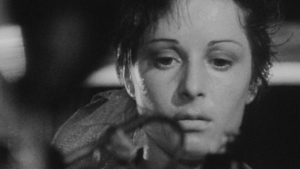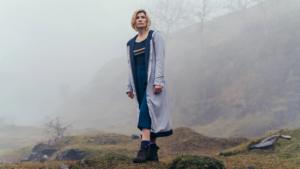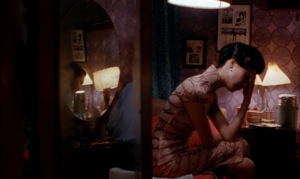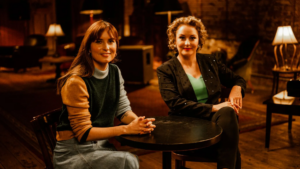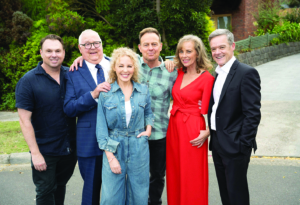Live-performance spaces were designed for people to congregate in person. When that can’t happen, as has been the case throughout Australia since the COVID-19 pandemic prompted state governments to begin placing restrictions on large gatherings in March, venues have to adapt or else simply close their doors. The Sydney Opera House has provided one such example of adaptation in action; with its ‘From Our House to Yours’ program – described as a mixture of ‘live broadcasts, archival footage, and premieres’, and promoted on social media with the caption ‘the show must go on(line)’ – the performing-arts centre has accelerated existing programs and morphed old models in order to stay operational and keep serving audiences.
The big challenge for live venues crossing to screen is the undercutting of their core business – scarcity. The reason live venues exist, arguably, is to provide that limited, exclusive experience that only a few people can have at a certain time: you have to be there or else miss out forever. Is the current absence of that exclusivity a challenge that digital producers for live venues are struggling with? ‘I think you kind of get the best of both worlds,’ Stuart Buchanan, head of digital programming at the Sydney Opera House, tells me. ‘You have that shared experience of coming together to watch [a show] live [online].’ The Sydney outlet is not alone, with live ‘what’s on’ columns now including digital concerts from across the world as part of their recommendations.
‘We’ve been livestreaming shows for years, but never on this scale,’ says Buchanan.
What makes it more interesting [at the moment] is that digital programming does make the Opera House more approachable [in] many different respects, [if] people are [for] whatever reason [unable] to visit the House due to tyranny of distance, or because of mobility issues, or that it’s not affordable.
Of course, there have been famous recordings of shows staged at the Opera House before – Hannah Gadsby’s game-changing Netflix special Nanette being an excellent recent example – and ‘live in concert’ performances have been produced for television, DVD and just about every other media form for decades. But these new COVID-era shows are different because they are filmed and broadcast live, with the aim of keeping the screen as interactive as possible. ‘Certainly, [we’re] looking at digital as a two-way platform, as opposed to a purely passive platform,’ says Buchanan. This is where good old social media and the ‘second screen’ come in: by allowing audiences to watch, tweet and comment in real time, these events create a space for them to engage with both the artists and one another, enabling a connection that is missed by all.
There are clear inroads to be made with particular audiences, too, Buchanan says.
Kids programming has been one of the key drivers in terms of quantity of content we’re making, but also in some of the innovations we’ve been keen to see in digital. For example, one of the things that we’ve [been doing] now for quite some time [is] digital interactive tours, and what I mean by that [is] tours that are conducted online and in real time with schools that might be watching from regional or remote areas […] They’re able to interact with the tour guide as they walk around the House telling stories about what’s happening, and you might watch that as a video.
One of the leaders in this new type of screened live performance at big outlets like the Opera House has been The Wiggles (aka the Beatles of kids music). As well as performing their own DIY shows from Hot Potato Studios and broadcasting across various social-media outlets, The Wiggles gained international attention as a result of their show at the Sydney Opera House – not only for the band, but also for the Opera House’s digital output. ‘The Wiggles, for example … it was great that everybody came together to watch them live,’ Buchanan says. ‘I think, off the top of my head, the real-time audience for that was somewhere in the region of 15,000 people.’ Just a few more than the 2000 or so who would have fitted into the Concert Hall normally, then!
Outlets like the Opera House have made deliberate choices to keep up high production standards and polished performances, setting professional live venues apart from DIY shows or ‘Instaconcerts’ (in which, as the name suggests, performers take to Instagram to play for fans). Bigger venues pose much bigger logistical challenges and risks (how many people can be in the space at once? How close can they be to one another?), but these can push innovation too. ‘It’s given us so much to think about, creatively, going forward,’ says Buchanan.
It’s allowed us to try a whole bunch of new things in a really quick period of time that might have otherwise taken a lot longer to do […] One of the things that’s interesting about [the 20 June event] with the Alaska Orchestra is we’re actually working with a video artist who’s mixing the live performance with their own artworks to create a kind of digital show that’s quite unlike something you would see if you were sitting in the Opera House. We’re making a virtue out of the fact that this is a digital experience, rather than just purely replicating the live experience. So that’s something for us that’s pretty interesting to delve further into in the future, transforming it a little bit just from being ‘point and shoot’ – if you like – with the cameras to [seeing] how we [can] take best advantage of the screen experience to enhance the whole event.

